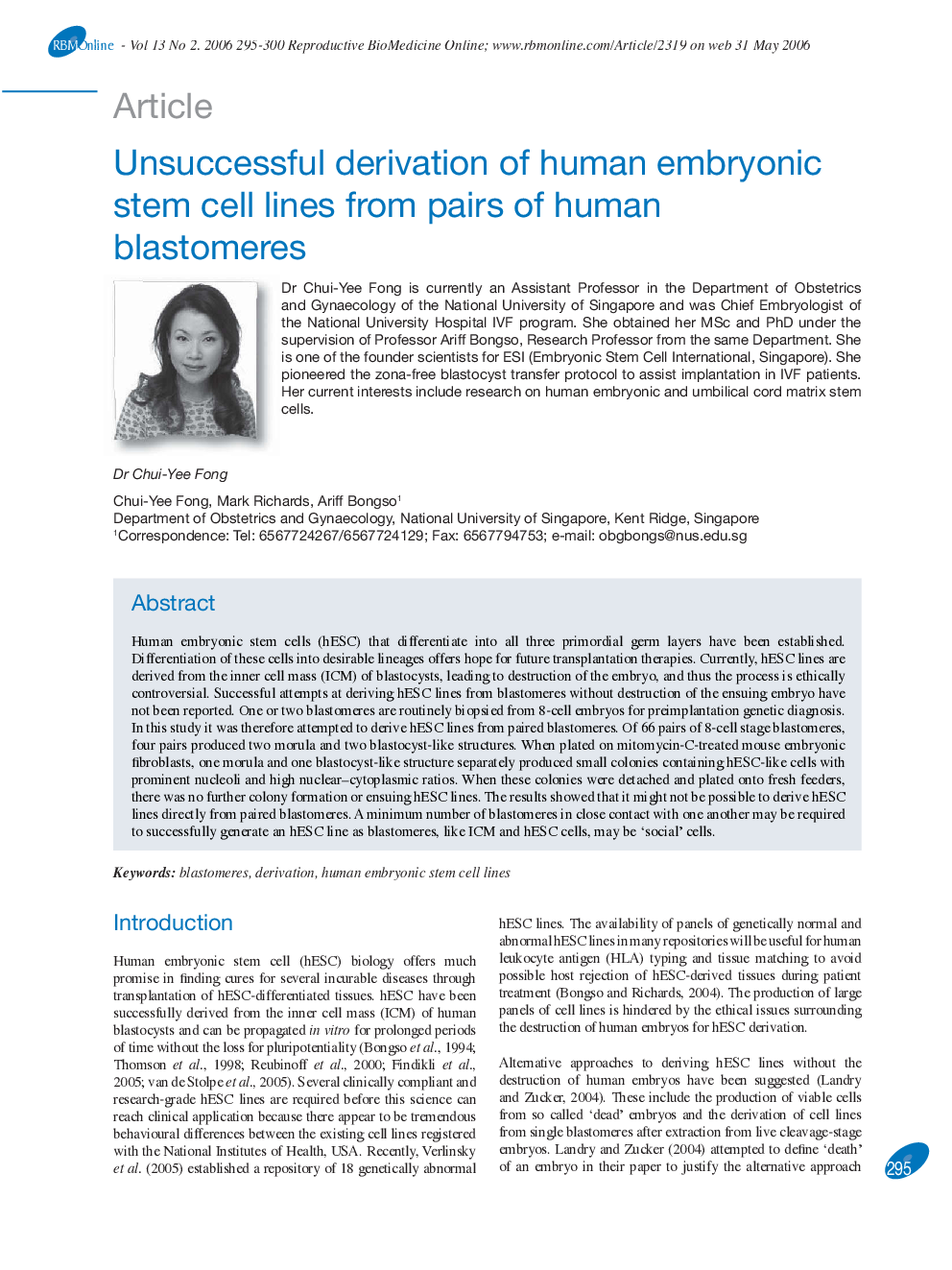| Article ID | Journal | Published Year | Pages | File Type |
|---|---|---|---|---|
| 3972853 | Reproductive BioMedicine Online | 2006 | 6 Pages |
Human embryonic stem cells (hESC) that differentiate into all three primordial germ layers have been established. Differentiation of these cells into desirable lineages offers hope for future transplantation therapies. Currently, hESC lines are derived from the inner cell mass (ICM) of blastocysts, leading to destruction of the embryo, and thus the process is ethically controversial. Successful attempts at deriving hESC lines from blastomeres without destruction of the ensuing embryo have not been reported. One or two blastomeres are routinely biopsied from 8-cell embryos for preimplantation genetic diagnosis. In this study it was therefore attempted to derive hESC lines from paired blastomeres. Of 66 pairs of 8-cell stage blastomeres, four pairs produced two morula and two blastocyst-like structures. When plated on mitomycin-C-treated mouse embryonic fibroblasts, one morula and one blastocyst-like structure separately produced small colonies containing hESC-like cells with prominent nucleoli and high nuclear–cytoplasmic ratios. When these colonies were detached and plated onto fresh feeders, there was no further colony formation or ensuing hESC lines. The results showed that it might not be possible to derive hESC lines directly from paired blastomeres. A minimum number of blastomeres in close contact with one another may be required to successfully generate an hESC line as blastomeres, like ICM and hESC cells, may be ‘social’ cells.
